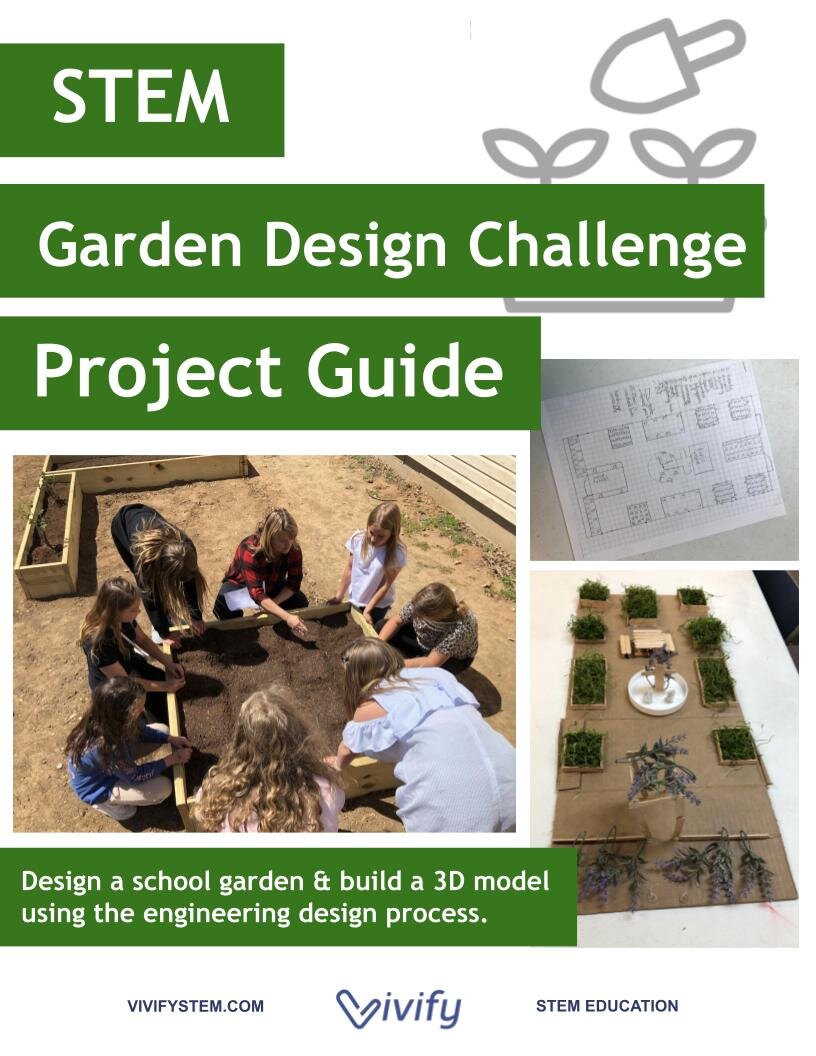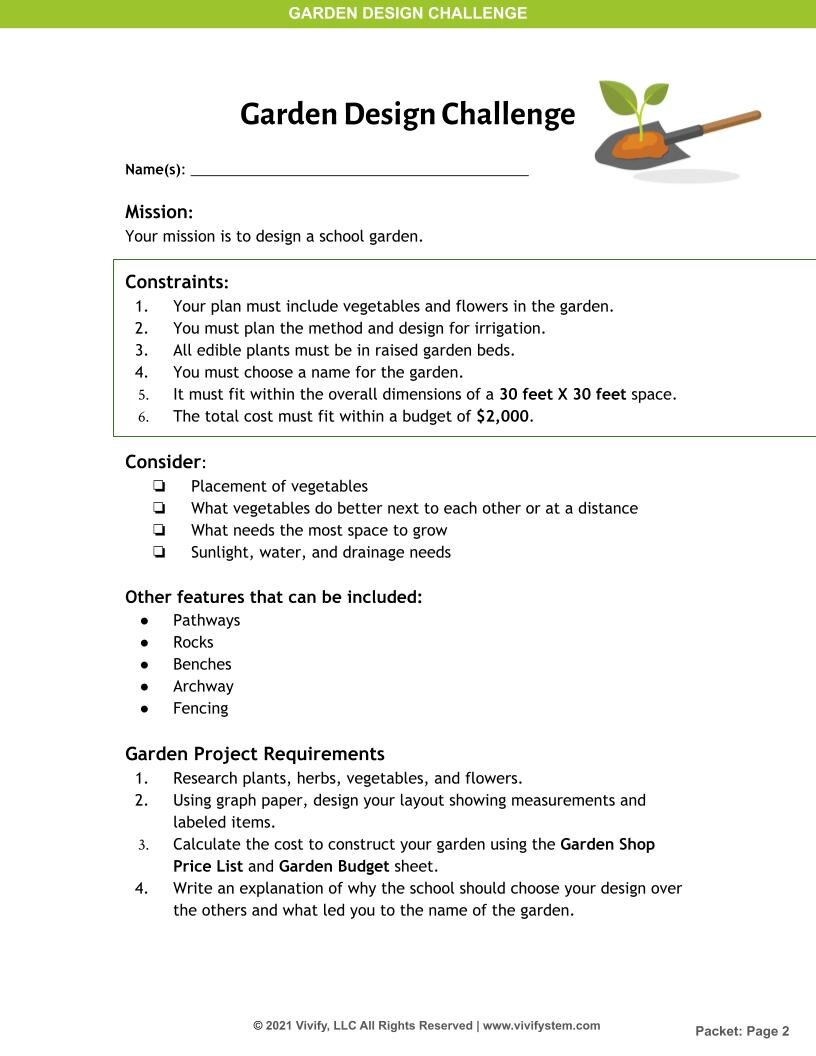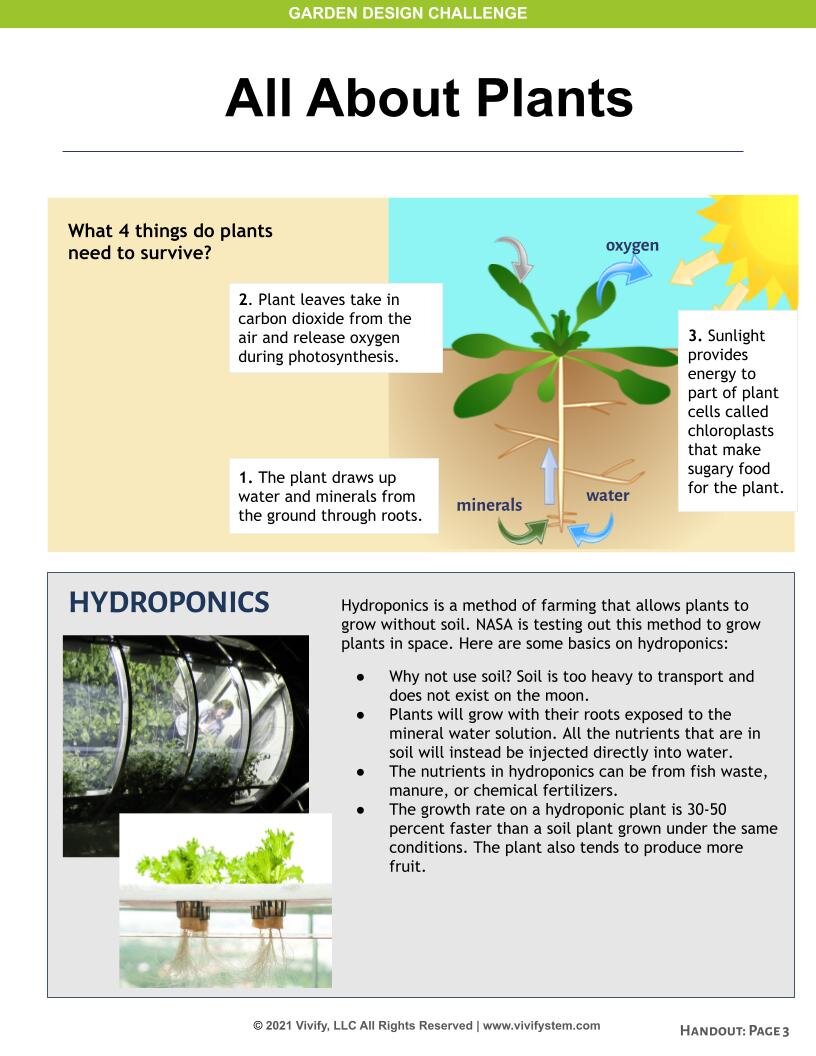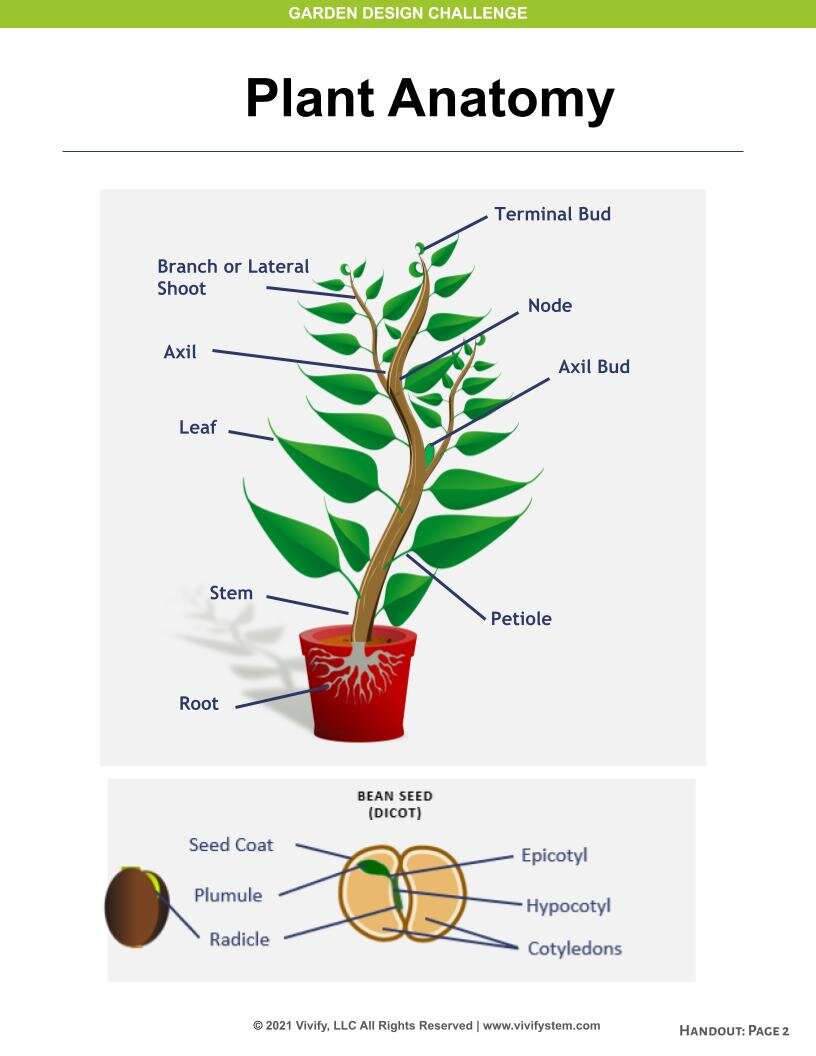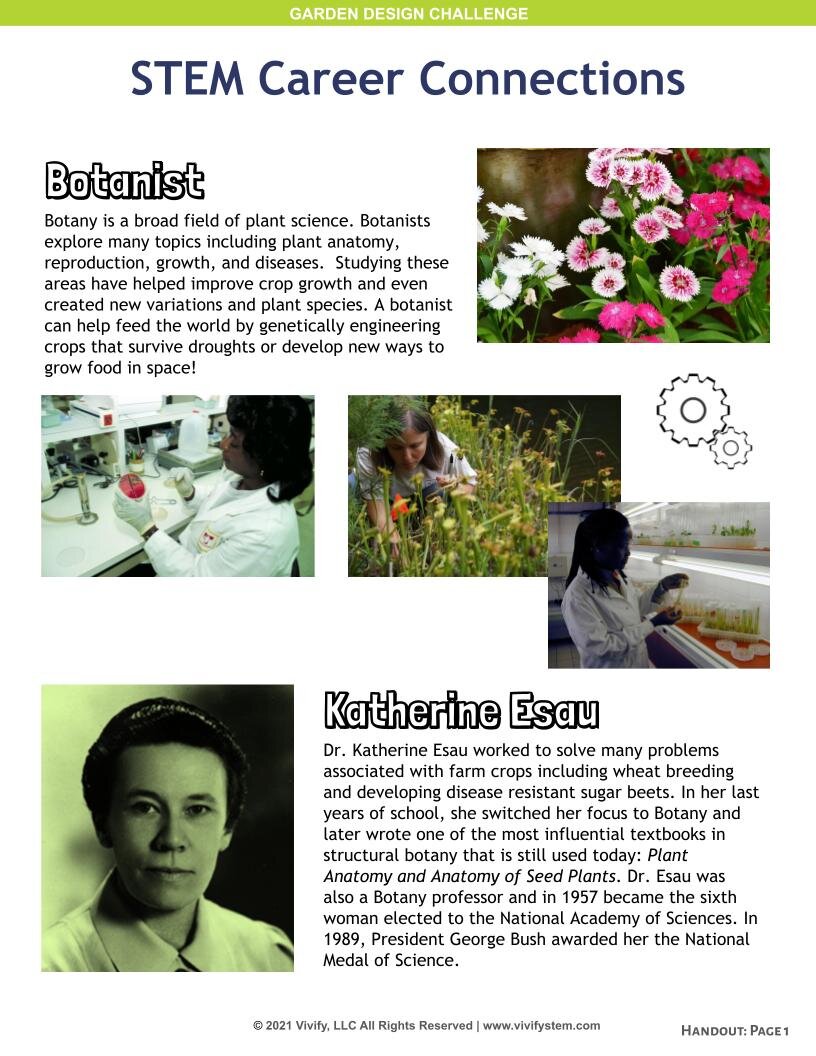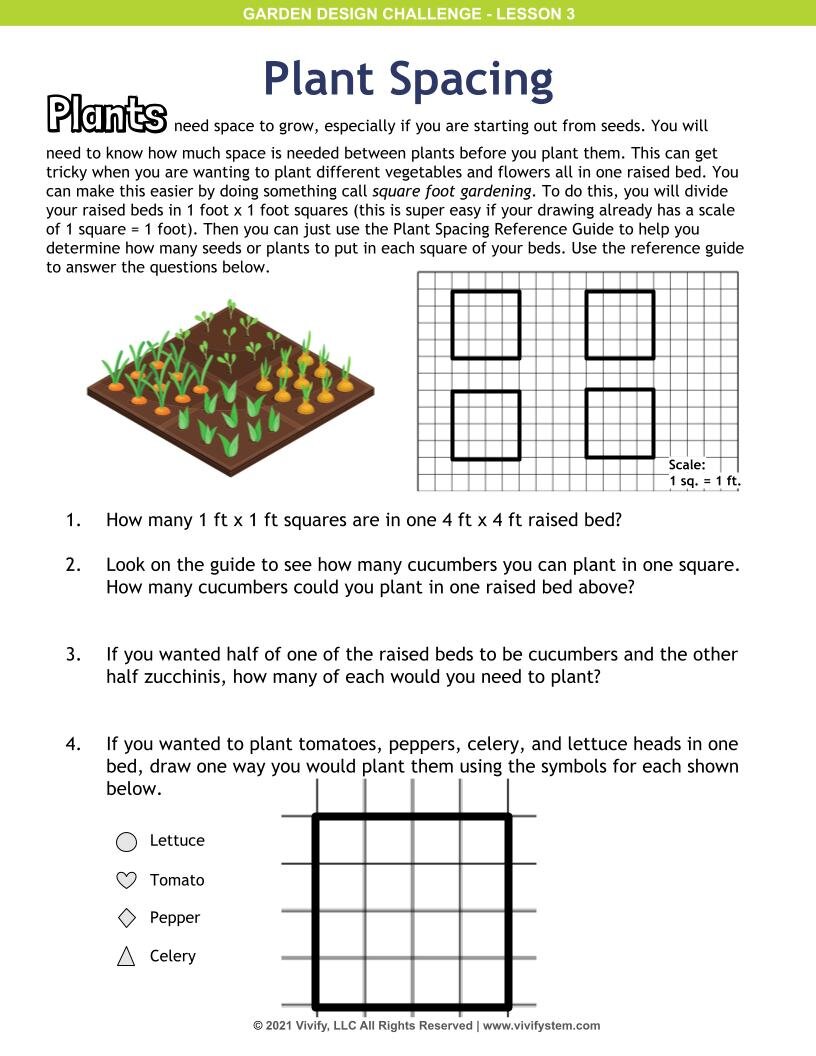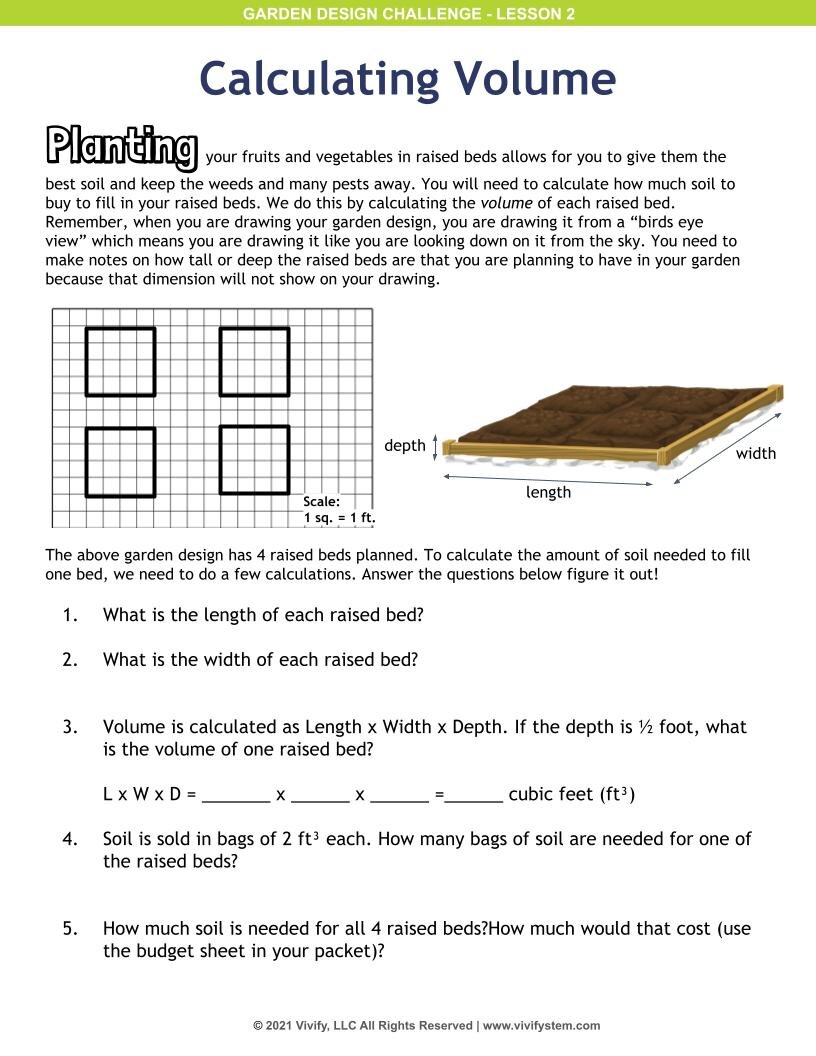Design A School Garden STEM Project
By Claire Meschkat
Originally Posted: April 16, 2021
Updated: November 2025
One of the most rewarding STEM activities is when students can take a design and bring it to life in a real-world setting! Designing a school garden is the epitome of the STEM design experience that will leave a lasting impact and provide learning opportunities for years to come. We just completed this epic project at my school, and I am sharing how you can do it too!
STEP 1: Plan to Build a School Garden
Even if the only space you have is a small corner of the playground, having space to plant and grow things with your students is an opportunity that pays for itself one hundred times over in life lessons. Approach your administrators with a short-term benefit plan, a long-term benefit plan, and a funding plan. For the short-term, you can involve your students in a design competition to boost their engagement in a project while honing their applied mathematics and science skills as well as their engineering design prowess (more on this later!). Then proceed to paint a picture of how students of all grade levels can get involved in planting various plants, studying how they grow, learning about botany and conducting science experiments, and perhaps even giving back to the community by donating the produce grown to a local food bank. If the students take ownership of designing and building a school garden, they will develop a sense of stewardship. This stewardship leads to sustainability, where the garden will continue to be used and cared for. The lasting impact of a school garden is priceless…. but to make this sit a little better with your administrators, pose the idea of seeking sponsorships from local businesses to purchase the materials needed to bring the school garden to fruition! You can also apply for grants through 4H and other organizations. If you cannot build a school garden, leading your students through a design project has many benefits too!
STEP 2: Student Design Challenge
Upper elementary through high school students will love the challenge of designing a school garden. Invite your students on a mission to design a school garden that has raised beds to grow fruits, vegetables, herbs, and other plants. Give them the constraints of utilizing a specific dimensional area, planning where all plants will be located, making an irrigation plan, and staying within a specified budget.
Your students will be actively engaged in designing the garden of their dreams and growing all their favorite foods and flowers. They may not even realize that they are practicing some important math skills along the way. They will need to draw their plan to scale on graphing paper so that correct amounts of materials can be calculated and plan appropriate plant quantities and spacing. They will also need to calculate the volume of materials needed, such as soil in the raised beds and rock for pathways. Additionally, they need to stick to a budget which is an invaluable math practice and life skill.
Lead them through the science of planning a garden as well! Students should understand the basic plant needs of air, good soil, and sun. Should they plant pepper plants right next to corn? They would need to consider where the sun would be and whether the taller plants would prevent smaller plants from getting the sunlight it needs. And what about companion planting? Students should be aware that not all plants are friends; however, there are added benefits when planting things like mint and lettuce since mint repels slugs that like to feed on lettuce. Cool, right? You can throw in some great lessons on plant anatomy and even STEM career connections like Botanists to inspire students who may find that this project is the spark to their future career interests.
STEP 3: Garden Design Competition
Take the garden design challenge to the next level by adding an engineering design component. Challenge your students to create 3D models of their school garden designs! Go to your local craft supply store and ask to have broken or extra pieces from their faux floral department or even ask if they would donate some materials to use. Provide cardboard and other recyclable materials for students to bring their garden designs to life in a scale model. Tissue paper also makes for great plants and soil! Lead students through brainstorming how they will represent the different aspects of their garden design with the available materials. They should still draw a design for their creations even though they have a garden plan, the engineering design process here is meant to guide your budding engineers through physical design after they went through the conceptual design.
Make this 3D model a design competition by forming a committee of judges who are knowledgeable about gardening. There may be a gardening club in your area or local landscape architects and designers who would be happy to help judge and give your students feedback. Treat the competition like a school science fair by putting all of the projects on display and having judges grade the designs on efficient use of space, proper irrigation, creative design solutions, and other gardening considerations. Have your students present their designs to the judges and explain why they think it would be a good fit for the school. If able, the winning design could be the solution that is made a reality in building an actual garden at your school with a plaque acknowledging the student who created the design.
Interested in a full project guide that covers all the details from planning a garden on paper to conducting a 3D model design challenge? Click below!
STEP 4: Extended Learning
Having a school garden or a small space to plant seeds with your students can provide multiple benefits. Other resources can provide additional content to keep your students working and learning in the garden. Here are a few of our favorites:
Tomatosphere - Study the growth of tomato seeds that were flown in space! This free program involves your classroom receiving two packages of tomato seeds from the First Seed Foundation. One package contains seeds that have been flown in space aboard the ISS and the other package has “control” seeds that have been kept on Earth. Students will plant the seeds and complete a science experiment to compare the germination rates of the two packets of seeds where the students do not know which packet was flown in space and which was not until results are submitted. In this project, students learn about the effects of the space environment on food growth that will be used by real scientists who are learning how to support long-term human space travel.
School Garden Lesson Plans - These free elementary lesson plans cover a variety of subjects related to a school garden from insect safaris to exploring plant dyes.
Know Sow Grow - Free curriculum to educate children on the basics of gardening.
Do you have a school garden? We would love to hear about your experience! Tell us about it in the comments.
10 Simple Summer STEM Activities
Are you looking for simple STEM activities for the summer months? Perhaps you are running a summer STEM camp or have bored kids at home. Look no further for some of our favorite summer STEM activities that will get your kids building, exploring, and learning, including making a personal garden!




